Not long ago, Toyota Corporation announced a high-profile plan to abandon the pure electric vehicle program. This news has aroused no small "spray" in the industry, and the fire incident of electric taxis in Shenzhen 5.26 traffic accident seems to have splashed the development of new energy vehicles. Cold water, many people even began to question the prospects of new energy vehicles.
"China is facing the pressure of severe energy shortage, and the response to the energy crisis is urgent. New energy vehicles have been and will continue to be strongly supported by national policies. It is still the trend of the times. Toyota is just a case, and this will not affect the future trend. It will only lead to greater reflection in the industry on how to correctly develop new energy vehicles." Li Dan, Fujitsu's semiconductor product manager, elaborated his views at the 2012 AETF Asia-Pacific Automotive Electronics Technology Forum Summit held in Wuhan. Discusses the overall development trend of automotive electronics technology and how Fujitsu Semiconductor's platform development solutions can help Chinese automotive electronics developers meet future design challenges.
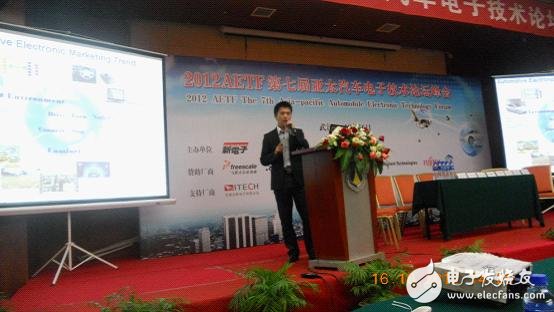
Figure 1. Li Dan, semiconductor product manager at Fujitsu, speaks at the 2012 AETF.
Interpretation of the three major trends of environmental protection, comfort and safety
The three key words of environmental protection, comfort and safety can be said to be seen in the speeches of many automotive electronics semiconductor suppliers. However, Li Dan has combined Fujitsu Semiconductor's long-term cooperation experience with leading automakers and primary and secondary suppliers as well as his own observations on the local automotive electronics industry.
In terms of energy saving and environmental protection of automobiles, Li Dan pointed out that one of the most important manifestations of traditional cars is how to reduce fuel consumption in the case of similar engine technology. This mainly depends on the weight of the body, and the body network can reduce the cost and weight of the wire harness. An important aspect; in addition to the body electronics, there are some special body frame structure designs that can also reduce the weight of the car, further energy saving, such as all-aluminum engines, and so on. Of course, the development of new energy vehicles such as fuel cell vehicles and electric vehicles is the most fundamental way to reduce fuel consumption.
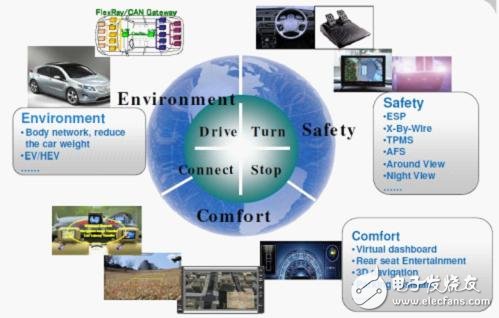
Figure 2. Automotive electronics market and technology trends.
In terms of improving car comfort, Li Dan highlighted the role played by automotive multimedia systems, including more human-computer interaction, more intuitive driving assistance experience, and more media entertainment projects. “We have seen some trends in the configuration of high-end cars that are moving to low-end cars, such as higher-quality audio, graphic display dashboards, rear-seat entertainment, and more intuitive 3D navigation technology, fully automatic air conditioning, Parking assist systems, etc. Of course, for many small cars in emerging markets including China, India, etc., low-cost car audio still has a large market space," he said.
In developed countries, the number of deaths and disabilities caused by traffic accidents has been very low. According to Li Dan, Chinese automakers (including joint ventures and local brands) now pay more attention to safety systems and reliability design than ever before, and have applied or are applying various advanced technologies to the models that are now launched, including Earlier, ABS, now ESP body electronic stability system (ABS is also integrated), in addition to AFS adaptive headlight system, TPMS tire pressure monitoring system, surround / night vision technology.
Responding to automotive electronics design challenges requires platform thinking
However, the above three major development trends have also made the design of automotive electronic systems increasingly complex, and more and more difficult problems and challenges have emerged. Taking the number of MCUs as an example, according to relevant statistics, 20-30 pieces are used for low-end models, 40-50 pieces for mid-end models, and as many as 80-100 pieces for high-end cars. "This is just a rough statistic, and there may be more applications in electric vehicles. So many MCUs are scattered on this car, just like human neurons, and the bus/network is like a nerve connecting them." Dan pointed out, "I think one of the core of automotive electronics technology is the body network, because its energy-saving, safety and comfort, its application system is very complicated, in the past may be a complete implementation in a centralized system, Now that you want to change the centralized topology to a distributed architecture, the network becomes very important."
He said that on the basis of the network platform, there is an urgent need for a complete development platform to solve the above design challenges. This platform includes all software platforms, hardware platforms and system structure platforms. Only these platforms are fully established, automotive electronics. Engineers can do any function expansion or any new project to quickly and reliably develop based on the original structure and original accumulation.
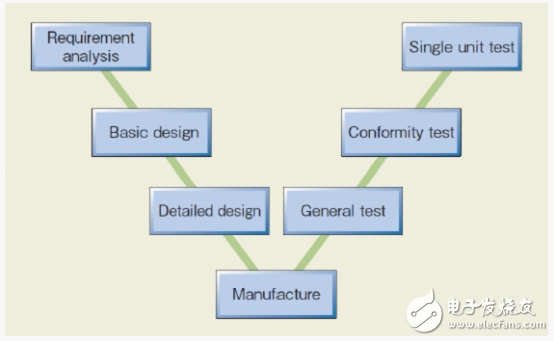
Figure 3: The challenges facing automotive electronics R&D engineers.
Indeed, engineers encounter such “blockers†in system design: SPECs that are not clear at the beginning of the project will cause a lot of ambiguity and design changes; lack of relevant background knowledge about new functions; changes in software platforms; EMC/ EMI troubleshooting; software reliability testing and troubleshooting; documentation and process work; tight schedules.
How to effectively improve the quality of engineer development and reduce the difficulty of product development is an important issue facing the industry. Platform development solutions are a solution. In the speech, Li Dan listed the benefits that Fujitsu Semiconductor's platform development solution can bring to engineers:
Modular system design reduces design complexity;
System changes have become easier, including software and hardware;
Enhance price negotiation capabilities;
Better logistics control;
Speed ​​up TIme to market.
In addition, platforming can also meet the challenges faced by management. If there is no platform, inventory management will be very troublesome; the entire supply chain management is also very troublesome; because there are many different devices, if the product model is too scattered, it will reduce the price negotiation ability; slow response to the market; face weak knowledge accumulation Problems, etc.
Fujitsu Semiconductor's "soft and hard integration" platform development solution
Fujitsu Semiconductor's platform development solutions include hardware platformization and software platformization, but the two are organically integrated.
In terms of hardware, it is mainly reflected in providing a broader product range. The same series of products will cover most applications and different levels of requirements in automotive electronics, as shown in Figure 4 below. As companies continue to evolve, product types and lineups can change dramatically. Therefore, when making platform selection, enterprises need to make comprehensive considerations on the number of pins, Flash capacity, bus requirements, cost, etc., to avoid frequent switching platforms when the product line is expanded.
"Fujitsu Semiconductor's automotive electronic hardware platform can provide automotive-grade and industrial-grade product selection in the same series. It is also automotive-grade. Some customers need CAN bus communication, some do not need it, and CAN bus costs are high. We offer both CAN-free and CAN-free options in pin-compatible models, which are compatible with CAN and without CAN in the same circuit design, since cost optimization and great Flexibility," Li Dan said.
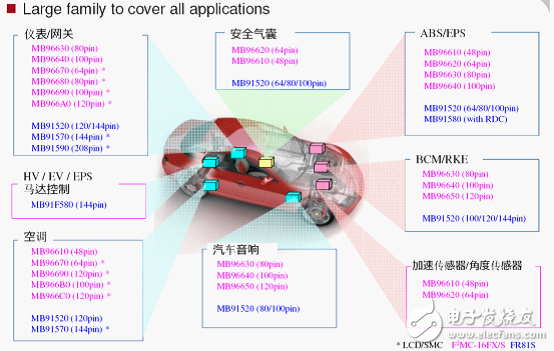
Figure 4. Fujitsu's semiconductor hardware platform covering most applications in automotive electronics.
The product models in the purple-red part of Figure 4 belong to the main "cost-effective" 16FXS series 16-bit MCU, which is very suitable for low-end and emerging markets, covering various automotive applications such as instruments and audio.
The blue FR81S series 32-bit MCUs are high-performance, and can provide many feature selections, such as multi-channel CAN gateways, graphic instruments, motor control of electric vehicles, etc. The overall cost performance is also good, and can be done with the lowest system cost. Get the right solution.
In terms of software platform, Li Dan said that Fujitsu's development environment is compatible with all 16-bit/32-bit hardware platforms, and future product roadmaps will ensure the same development environment, so customers do not need to relearn, thus shortening Development cycle.

Figure 5. Fujitsu Semiconductor's development environment is compatible with all 16-bit/32-bit MCU hardware platforms.
In his speech, he specifically mentioned Fujitsu's support for the AUTOSAR (Automotive Open System Architecture) standard. AUTOSAR, an emerging automotive design software standard, is the result of a joint effort by European automotive manufacturers and their suppliers to bring together structures, clear interfaces and implicit methods into one process, namely automotive distributed systems. Design Flow. It is a set of standards covering interface and software module definitions that create an embedded software architecture for a vehicle's complex network distributed system. AUTOSAR enables designers to focus on unique and innovative features without being affected by integration details.
According to Li Dan, international TIer-1 suppliers have cooperated with China's R&D department based on AUTOSAR development, and most of the local manufacturers are still in the learning and wait-and-see stage. However, AUTOSAR is undoubtedly the general trend of automotive software development. It is based on model development. It is not necessary to manually write code. It is to call the model and then configure to automatically generate code. This approach will reduce development difficulty, shorten product development cycles, and improve software reliability. Most Chinese manufacturers are welcome to such a development method, but only need a process of learning and understanding.
Figure 6 shows the AUTOSAR Roadmap of Fujitsu Semiconductor. Its 32-bit MCU and its cost-effective 16-bit MCU can support AUTOSAR (competition vendors generally only support 32-bit MCUs).
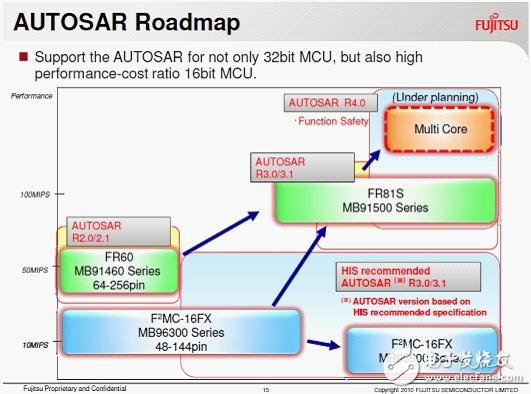
Figure 6. AUTOSAR Roadmap for Fujitsu Semiconductor.
In addition, the development method of AUTOSAR requires a lot of third-party tools to support, and Fujitsu Semiconductor has worked closely with these third-party tool vendors (see Figure 7).

Figure 7. Fujitsu Semiconductor works closely with many AUTOSAR third-party tool providers.
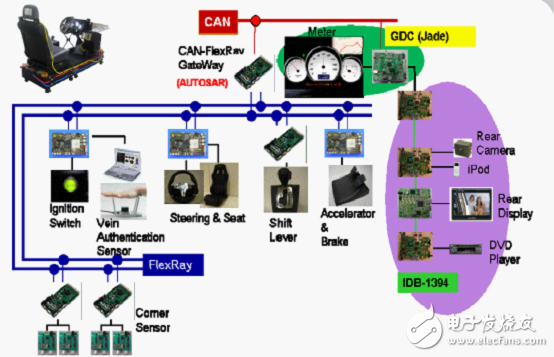
Figure 8. Fujitsu's AUTOSAR solution covers a complex network distributed system of the entire vehicle.
Brake Pressure Sensor,Pressure Detector Brake,Hydraulic Pressure Sensor,Analog Pressure Sensor
Shenzhen Ever-smart Sensor Technology Co., LTD , https://www.fluhandy.com